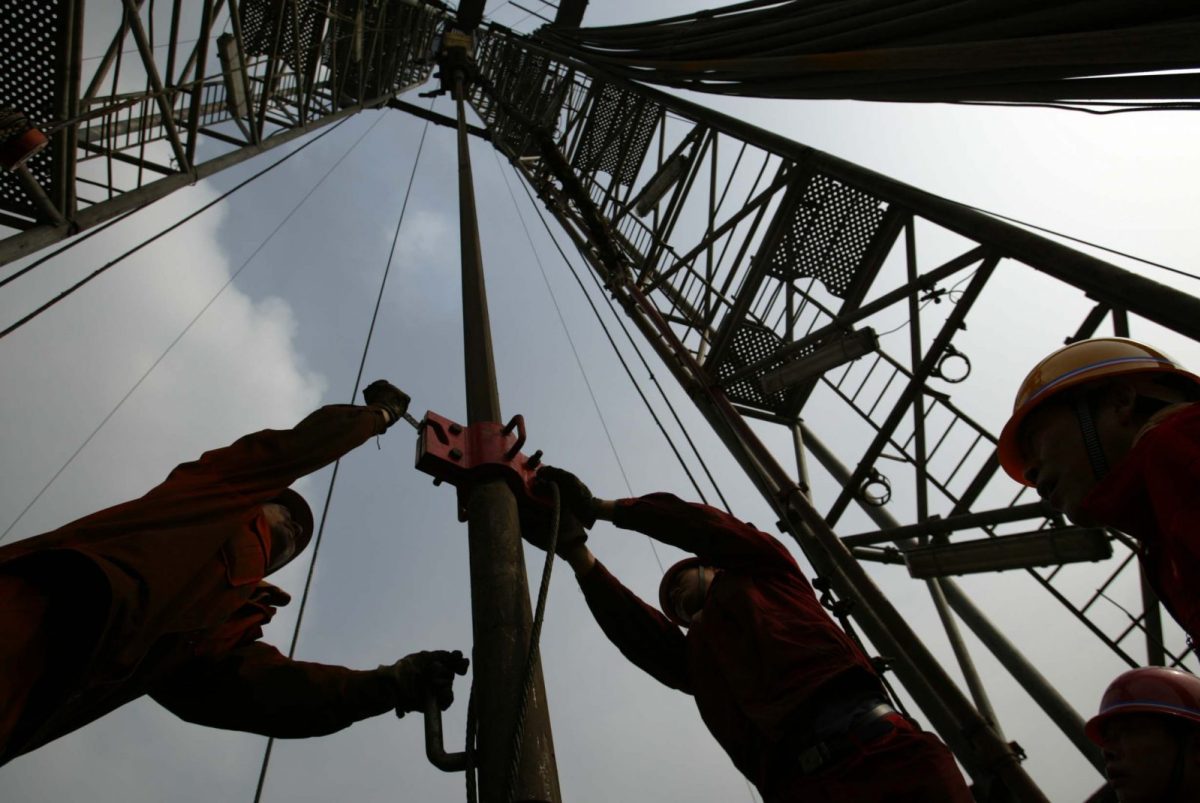(ATF) At a time when the impact of the coronavirus led to a decline in global demand for oil, Saudi Arabia and Russia were unable to compromise in their desire for a greater share of the market, so this caused a sudden collapse in prices.
Crude oil has hit its lowest level in nearly 20 years and excess crude is shipped overseas for storage. In response, the Oxford Energy Research Institute said on March 25 that as crude oil prices fell from $55 per barrel to less than $30, Chinese crude oil buyers could save $250 million a day. It was an opportunity that they appeared to exploit.
According to the latest data released by the General Administration of Customs on March 7, China imported over 86 million tons of crude oil from January to February 2020. In 2019, China imported a record 506 million tons of crude oil, 9.5% higher than 2018. Imports set a record high for 17 consecutive years. China has, according to calculations, imported the equivalent of more than 10 million barrels of crude per day. Importing crude oil costs US$239 billion a year and accounts for more than 10% of the country’s total imports.
The latest CIF (cost, insurance and freight) prices of China ‘s crude oil imports released by the General Administration of Customs Global Trade Monitoring and Analysis Center and Shanghai Petroleum and Natural Gas Trading Center, from March 2-8, crude imports were 421.882 yuan a barrel, which in one week fell 28.165 yuan per barrel, a decline of 6.26%.
State secret
Chinese State guidelines have always maintained that strategic crude oil reserves are “indispensable economic blood”. So how many days will China’s strategic oil reserves last in the event of an emergency such as an oil supply disruption? Whether there is a gap compared with the United States and Japan, because China’s oil reserves have been rarely published, which naturally causes speculation by international oil companies and foreign media. China also has its own crude oil supply, but the amount of working oil rigs is a state secret.
Reuters quoted the International Petroleum Organization’s estimated statistics, saying the United States can support its needs for about 149 days, while Germany has enough for 100 days, and Japan has enough for 150 days. But, as the United States’ dependence on overseas oil from the Middle East has decreased, its strategic oil reserves naturally continue to decline, although the US Department of Energy has previously tried to sell part of it to curb rising oil prices. According to a bill passed by the US Congress, the size of the US strategic oil reserve will drop to 410 million barrels by the beginning of 2028, which is higher than it was at the end of 2009. At one point it was reduced by 43.5%, but at present, with the plunge in oil prices, the United States is still preparing to use low oil prices to replenish oil reserves.
The US Department of Energy decided on March 22 to purchase up to 92 million barrels of crude oil for its strategic oil reserve by the end of June 2020. At present, the total storage capacity of the US strategic oil reserve is approximately 7.135 billion barrels.
Some analysts suggested that the demand for crude oil in the Chinese market would decline, but with the recovery of optimism and economic data showing the Chinese economy has restarted, Chinese buyers may import more crude over the next few years – if Chinese refining giants decide to speed up the replenishment of strategic crude oil reserves. But Chinese buyers of crude have also emphasized a diversification of import channels.
Hoarding oil
According to the latest data from Customs and the National Bureau of Statistics, from January to December 2019, China’s crude oil processing volume was about 660 million tons, a cumulative increase of 7.6%. But China still seems to continue to hoard oil reserves at an alarming rate. In fact, as early as last year, China continued to be the world’s largest importer due to demands of its new refineries and the growth of crude oil reserves.
In this regard, Reuters speculates that Chinese buyers have rarely provided details of the crude oil flow to strategic reserves and commercial inventories. But one can observe the total amount of crude oil from imports and domestic oilfields, then subtract the actual amount processed in refineries to calculate that China is still on the way to increasing its reserves to 90 days of imports.
Goal of 100 days of imports?
Coincidentally, the National Energy Administration said in September last year that China’s commercial and strategic crude oil inventories are both about 80 days of net imports. According to Reuters’ estimates, the first quarter of 2020 may see it reach 90 days of net imports. However, China has not clearly indicated the level at which it will stop increasing its reserves. But the Blue Book of the China Oil and Gas Industry Development Analysis and Outlook Report, says that by the end of 2020 China will have a reserve scale equivalent to 100 days of net oil imports. China currently has nine national oil reserve bases, which can store approximately 33.25 million tons of crude.
Considering that the current period of low oil prices may not last for long and that international oil prices will gradually rebound, certain Chinese companies have started to store a large amount of crude. The data shows that China has increased its strategic oil reserve (SPR) to 503 million barrels, which is the largest amount that China can store. It is expected that China ‘s reserve capacity utilization rate will exceed 90% this year. According to a report by Wood Mackenzie published on Monday (March 30), China’s crude oil inventories – including strategic and commercial oil reserves – are likely to increase significantly to 1.15 billion barrels.
Iranian warehouses, discoveries, breakthroughs
In recent years, Chinese oil companies have started to acquire and invest in a large number of oil and gas fields around the world. It is generally believed that most of this crude oil has actually entered the strategic oil reserve. In addition, the Iranian National Petroleum Corporation has a large amount of crude stored in bonded warehouses in Asia, due to sanctions. More than 20 million barrels of crude is in a bonded warehouse in Dalian, according to BWChinese.
Major breakthroughs in oil and gas exploration by Chinese energy companies have also led to the discovery and extraction of oil and gas at various projects. According to BWChinese, China’s oil exploration and production enjoyed a major discovery: CNPC deployed 21 oil and gas production capacity construction projects in four provinces and autonomous regions – Inner Mongolia, Shaanxi, Gansu and Ningxia, which will support a record 60 million tons of oil and gas production.
The China National Petroleum Corporation said it discovered a large field with a billion-tons of oil in the Ordos Basin. And recently, a trillion-square-meter shale gas field was also found in the Sichuan Basin. In addition, earlier in the year, information released by the Xinjiang Oilfield Company of PetroChina, showed that with a new generation of ultra-heavy oil development technology, its heavy oil production exceeded 100 million tons and a large high-quality naphthenic heavy oil production was completed. High-quality naphthenic heavy oil is rare in the petroleum industry. It is a strategic raw material for China’s economy and major engineering construction work.
‘Green energy’
China’s related energy and scientific research companies have also established a large number of global “green energy” sources. While the world is still arguing about oil production supply chains and oil prices, Chinese scientists and engineers are working on new energy. Breakthroughs are being made, for example, in the field of combustible ice, and China will also officially implement large-scale commercial exploitation, which means that new energy that is cleaner than oil will be used.
According to the Science and Technology Daily, China’s first medium-sized spherical tokamak fusion device – an experimental machine – has been completed in Hebei, and the first plasma discharge has been achieved. Meanwhile, current progress of an artificial solar project is expected to be completed and put into trial operation this year.
As China plans to purchase imported oil on a large scale with yuan, it will also help speed up the construction of strategic oil reserves. However, more importantly, this move will directly help hedge energy import and fuel costs caused by the fluctuation of the US dollar. But will the Petro-yuan outshine the Petro-dollar?
Also read:
Oil prices slide on shattered demand
Why global oil prices will fall below $10 (Tim Daiss)
























